Most marketing advice nowadays encourages small business owners to be active on multiple social media sites. From humorous TikToks to informative Twitter threads to aesthetically pleasing Instagram Reels, content creators have successfully learned the best ways to leverage each platform. With new social media sites on the horizon, there will be even more opportunities to be creative online and repurpose content.
When you repurpose content, you take one form of media, like a blog post, and remake it into a new form, like a TikTok. Think of it like recycling a social media post and tailoring it for another channel. The message of the content doesn’t change, but the form does. Repurposing content will allow you to maximize the reach and engagement of your posts – making it a smart move for anyone looking to grow their brand on social media. In this article, we’ll go over the best ways to repurpose content using examples from real small businesses.
Why should you repurpose content?
Repurposing content opens up so many opportunities – it’s an excellent way to reach more individuals, create a variety of content for your brand, and build your authority on a subject.
To save time and money
The biggest benefit of repurposed content is that it will save you time and money. You already invest a ton of energy into crafting your content, so you might as well extend a social media post’s life by reusing it. This will allow you to spend less energy creating new content from scratch for every social network, and more time on making sure the original post hits the mark.
To meet people where they are
Repurposing content can bring more exposure to your posts. Not all of your supporters will be following you on each of your social media accounts, some may only follow you on one or two. Repurposed content can be used in multiple spaces, allowing you to connect with individuals on platforms they already frequent.
To customize your posts
Repurposing your posts will also force you to customize your content for specific channels. To really thrive on social media, you need to learn what type of media works best for each specific site. While an article can easily be turned into a Twitter thread or text-only LinkedIn post, if you wanted to share the same information on Instagram or TikTok, it would be best if you repurposed this information into a video.
To boost your SEO performance
Finally, repurposing content can be good for SEO purposes when done correctly. If you have a blog post on your website that’s bringing in a ton of traffic to your site, you can then repurpose this information into an infographic for Instagram, or create a thread to share on Twitter, linking back to the original blog. This will allow you to share this information with a wider audience and is also a great way to drive organic traffic back to its source. When repurposing content that is already performing well, you can tweak it to include variations of the keywords, which will help you continue to rank for both your primary topic and other related topics.
The more content you create around a certain idea, the more brand authority you can create as well.
Real examples of repurposed content from small businesses
For the reasons we listed above, many small businesses' social strategy includes repurposed content. In fact, repurposed content makes up the bulk of their posts. Here are some examples from four small businesses who’ve effectively repurposed content on their social media.
How Kola Goodies repurposed a newsletter into an Instagram Reel
Kola Goodies, a Sri Lankan tea brand, recently nabbed a huge opportunity for a small business: they landed a TV commercial broadcasted during the Emmys. To share the good news with their followers, they sent out a newsletter to subscribers.

There, they told viewers how exactly to tune into the awards show, the importance of the moment, and shared a photo of founder Sajani Amarasiri. They then took to their Instagram account to share a Reel about the commercial.
The Instagram Reel essentially had all of the same information as the newsletter but also included a behind-the-scenes look into the filming process, which worked perfectly for the platform as the Instagram algorithm favors video content.
As you can see with this example, repurposed content will vary depending on the platform you share it on. While the newsletter just gave readers basic information about the commercial, the Instagram Reel went a step further by showcasing the filming process.
How Gaia repurposed a Twitter thread into an Instagram carousel
Writer and tarot reader Gaia uses her Twitter account to share advice on relationships, love, and self-care. Her tweets usually go viral and resonate greatly with her followers. Like this Twitter thread, where she discusses unhealthy relationship dynamics.
it’s a tough position to be in you know. you keep forgiving them because you 𝘄𝗮𝗻𝘁 to believe them. you love them, why wouldn’t you want to believe they’re capable of change or capable of being sorry? but then you learn that being sorry is more than just saying the word.
— 🌿 (@gaialect) September 4, 2022
After originally sharing her writing on Twitter, Gaia then made an Instagram carousel of the Twitter thread, however, she didn’t just share a screenshot of the original post. Instead, she repurposed it into a graphic.
The Instagram post uses the same words, but takes the tweets one step further by including visuals: an image of two separated individuals with broken hearts. The visuals help add an emotional layer to the post. This is an efficient way for Gaia to share snippets of her writing with a different demographic.
The writer even shared a tweet recently letting her followers know they could also find her on Instagram. This is a great example of how repurposed content can help you grow your following on multiple platforms and help you reach new audiences.
How Saie repurposed their Instagram Stories into a newsletter
Clean makeup brand Saie is known for their sustainability efforts and are constantly posting about how exactly they’re fulfilling their mission to be environmentally friendly.
The brand shared several Instagram stories back in 2021 about the various initiatives they’re a part of, including their pledge to be carbon neutral, certified plastic negative, and their partnership with 1% for the planet.
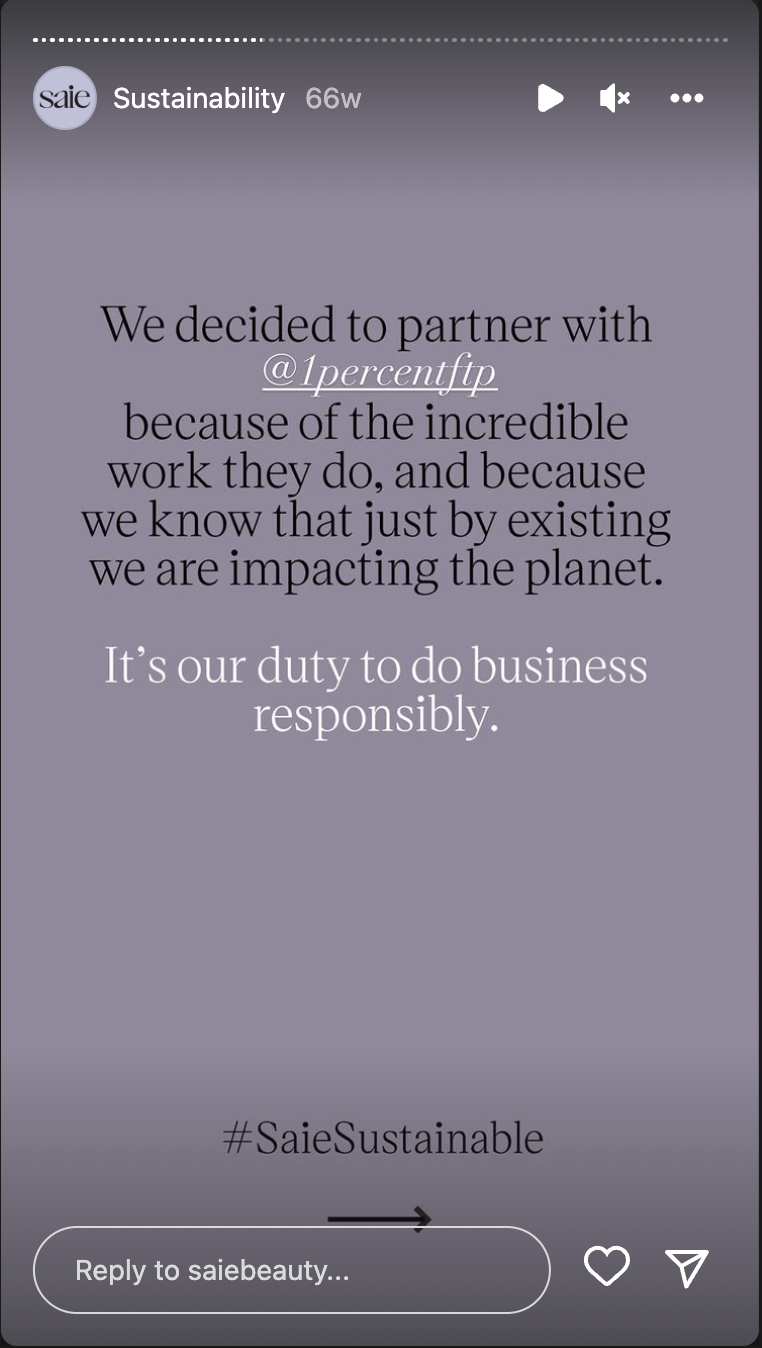
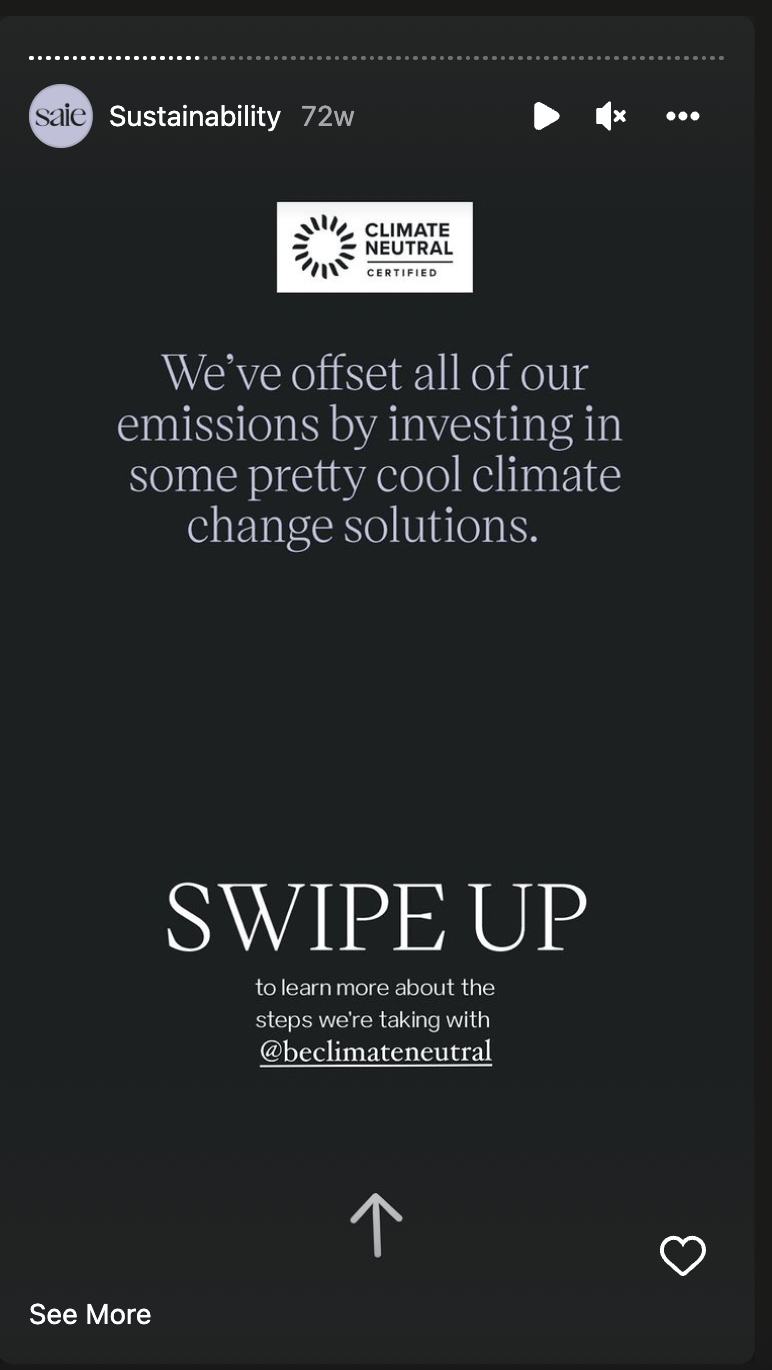
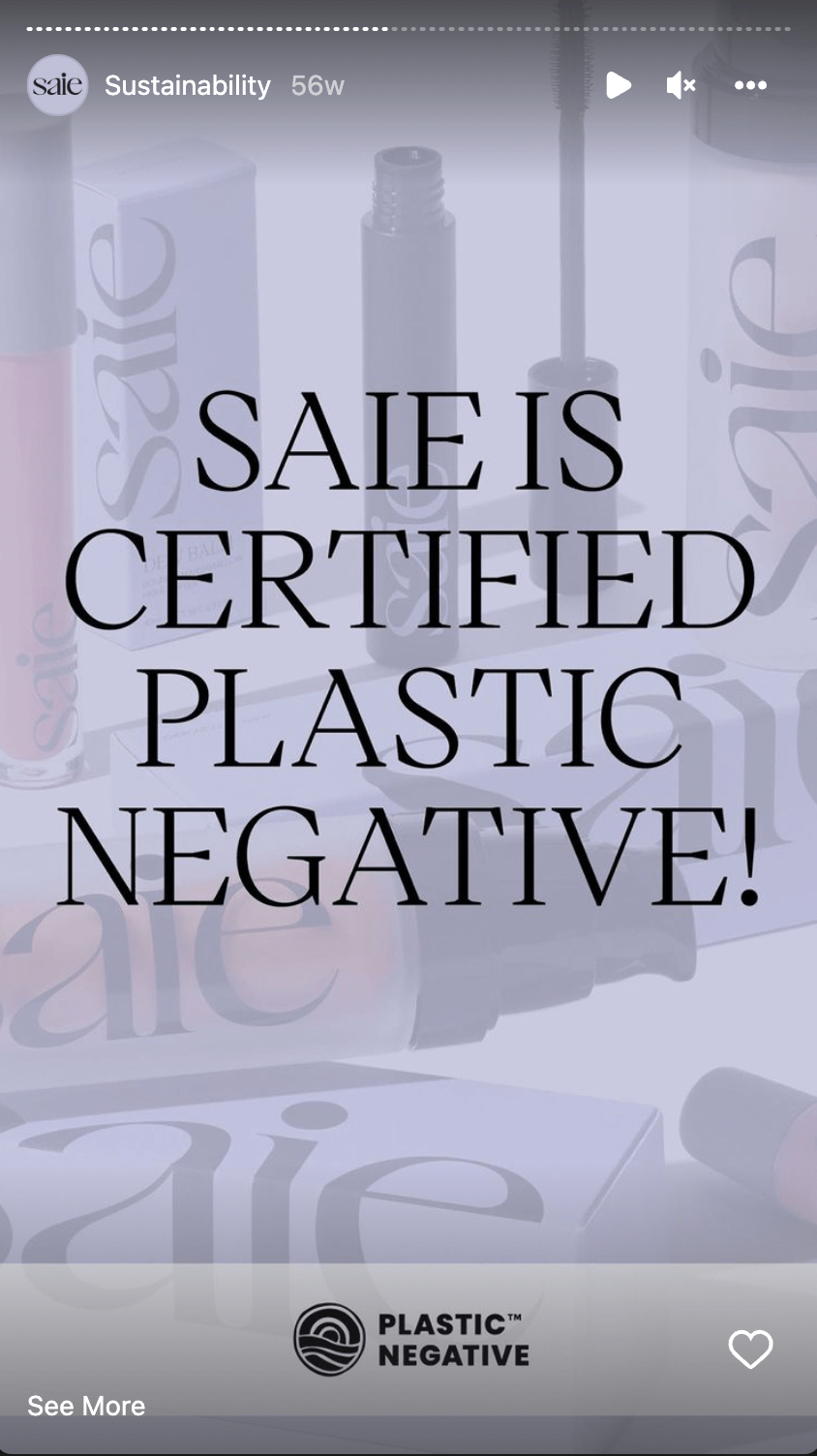
In honor of Earth Day 2022, Saie sent out a newsletter rounding up all of the initiatives they’re a part of, essentially using the same information that they originally posted in their stories. The newsletter was more detailed than their stories, however, which was appropriate as email marketing can be a bit more text-heavy than social media posts.
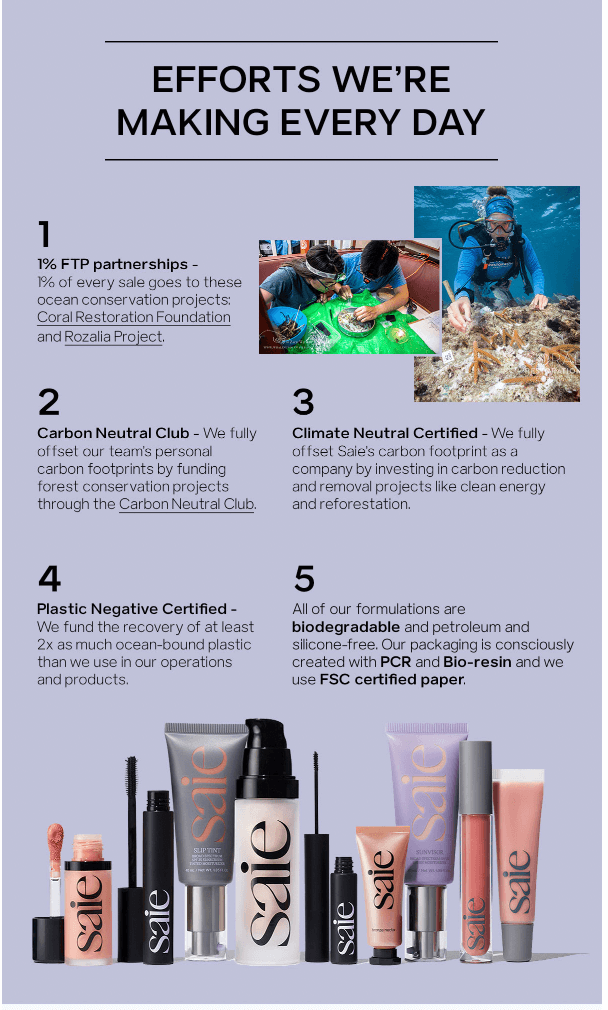
Here, Saie was able to repurpose evergreen content – as sustainability is something embedded into their mission and therefore a topic they’re always discussing – and effectively use it for a timely event such as Earth Day.
How Buffer repurposed a Tweet into a LinkedIn post
At Buffer, reading is a cornerstone for us and we even offer free books to all of our team members. As you can imagine, we’re constantly having discussions about books both internally and externally. So it’s no surprise our social media manager Mitra recently took to Twitter to ask followers about their book recommendations.
What books do you recommend for someone starting a small business? 📚
— Buffer (@buffer) June 10, 2022
Instead of simply resharing the question on LinkedIn, Mitra took the responses we received from our Twitter followers and repurposed them into a graphic for the networking site. This visual made the content stand out more than a simple text-only post would have.
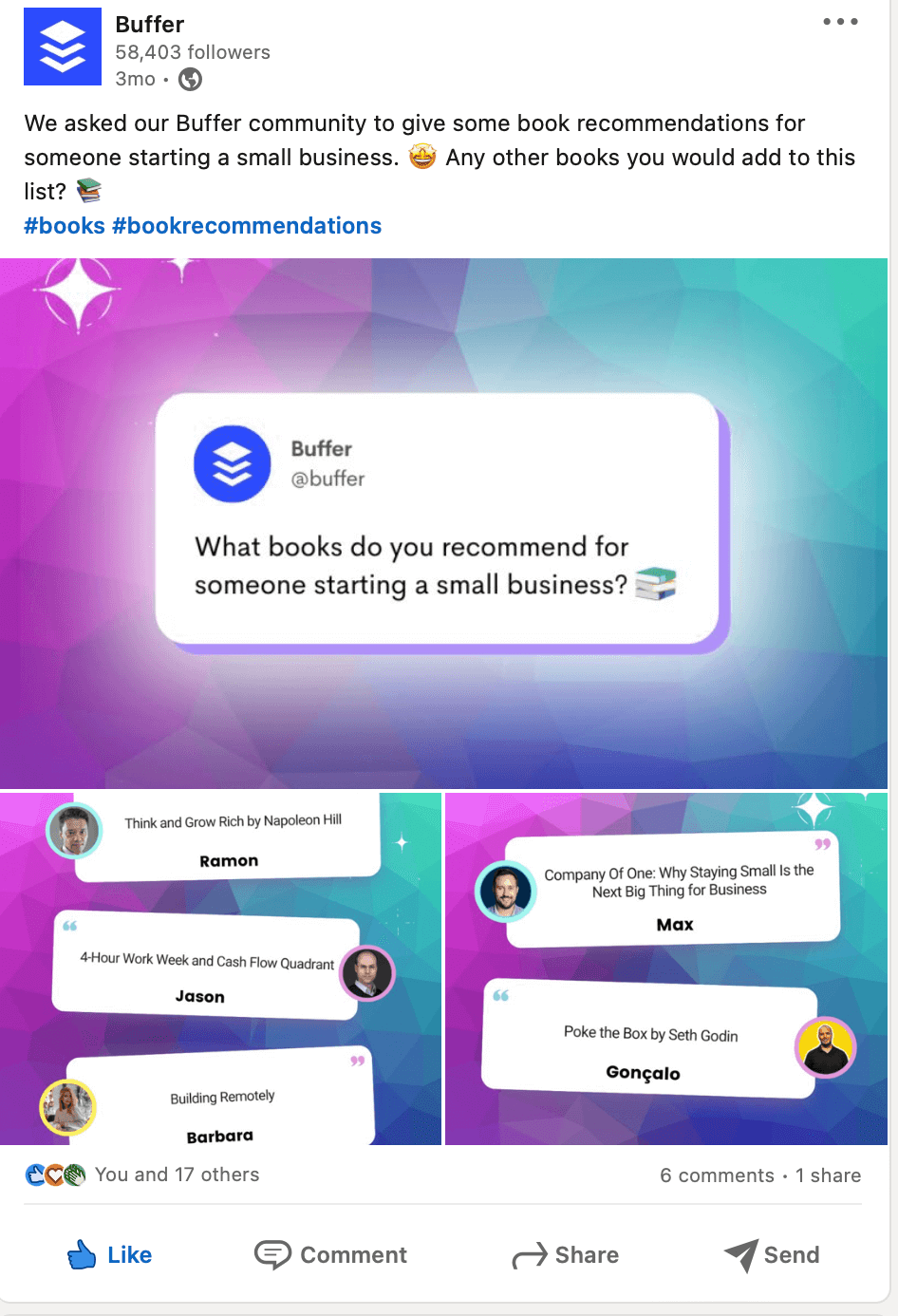
She also asked our LinkedIn followers if there were any other books they’d add to the list. This allowed us to create an open dialogue with our LinkedIn community and continue our Twitter conversation on a different platform.
In this way, we were able to use the content we already had instead of needing to invest more time and energy brainstorming something new for LinkedIn.
The difference between repurposed content and cross-posted content
Cross-posting is another great tool to boost your social media strategy, but it works a bit differently than repurposing content. When you cross-post content, you’re essentially sharing the same content in multiple channels. While there can be some customization – as we mentioned in this blog post – for the most part, when cross-posting, the format of the original post is unchanged.
Cross-posting is really best for times when one uniform format works across all of your social media platforms. Maybe you want to announce a new product or share important news about your team members, cross-posting that message to all your socials is a quick and efficient way to make sure all of your followers – regardless of the platform – are seeing that information.
Repurposing content will typically require more work than cross-posting but can ultimately be a more effective strategy in the long run. If you’re ever unsure of which method to use, here are some times we recommend choosing to repurpose content over cross-posting:
- If you have the time/resources
- Are sharing an especially important update
- Want to have more variety in your social media content
- Are looking to grow your followers on a certain platform
Really, there is no one way to share content. You have a lot of options when creating and posting content to social media, the two most common strategies being repurposing content and cross-posting.
And remember, you can use Buffer to stay on top of all of your social media needs! ➡️






